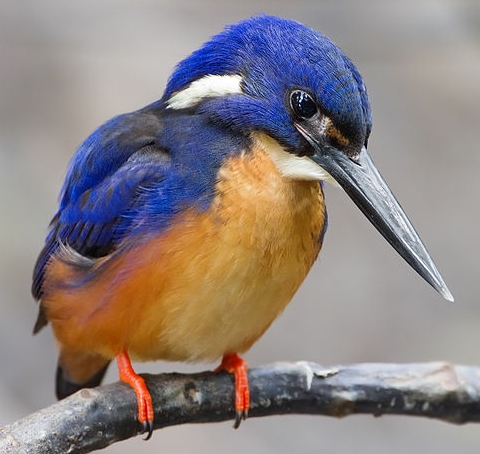
I ran across a story on biomimicry a few days ago. Although it discusses things that happened a while ago, I thought it was a great example of how copying designs found in nature can improve the designs produced by modern science and technology. The story involves Eiji Nakatsu, a Japanese engineer who worked on the high-speed “bullet” trains in Japan. These trains travel at speeds approaching 200 miles per hour, and not surprisingly, there are a lot of design challenges involved in such systems.
In particular, there were three design issues that plagued the trains. First, the train would produce a very loud noise when entering a tunnel, because it would be “smashing” into a column of confined air. While this slowed down the train a bit, the big problem was the noise that it produced. The loud bang would disturb not only wildlife but also nearby residents. In order to comply with Japanese noise pollution regulations, something needed to be done.
According to the article, Nakatsu met this challenge by redesigning the front of the train. As a bird-watcher, he had observed Kingfisher birds diving into water without producing much of a splash. He realized that this was similar to what the trains had to do when entering a tunnel, so he designed the front of the train to be more like the head and beak of a kingfisher. It worked. The train could enter tunnels at full speed without producing a loud noise.
There were also two problems related to the pantograph, which sticks out above the train and connects it to the power lines. First, the pantograph vibrated at high speeds, and that produced a lot of noise as well. Engineers also fixed this by copying a design from nature. They redesigned the pantograph after an owl’s wing, which has tiny serrations in its feathers. Those serrations cause the air rushing over the wings to form small vortices, reducing turbulence. The result is near-silent flight. Not surprisingly, the newly-designed pantograph did not have the vibration problems of the previous version, and as a result, it made little noise, even at full speed.
In addition to the vibrations, the pantograph also experienced a lot of wind resistance, which added to the noise issues and reduced the train’s efficiency. To fix that, the body of the pantograph was redesigned based on the shape of a penguin. Since penguins are shaped so that they experience a low level of drag in the water, the engineers assumed that a penguin-shaped pantograph would experience a lot less wind resistance. They were right.
The article I linked at the beginning of this piece has some nice “before and after” illustrations to show you how these parts of the train were redesigned based on what is seen in nature. This process is called biomimicry (mimicking the designs we find in nature in our own designs), but it is really just an example of engineers copying the designs that were produced by a much more talented Engineer.

That’s really amazing; thanks for sharing this. The work on the pantograph to mimic the serrations in owl feathers is especially cool. When evolutionists talk about amazing natural designs like these as “survival mechanisms”, I think they’re making a gross oversimplification. An Owl could have evolved in any number of ways and still survived. As it is, an Owl’s wing goes so far beyond merely helping it survive that we can copy its design for our most advanced engineering projects.
That’s an important point, Keith. There are lots of things in nature that seem to be over-designed if survival is the only issue (see here and here, for example).
Off-topic, but I ve recently become very troubled by arguments for design. How much would you attribute harmful phenomena in nature to be designed, for example?
I wrote about it recently in a response to another blogger.
http://reformingthehereticalmind.blogspot.com/2014/06/intelligent-design-evolution-problem-of.html
Daren, that’s a very poor argument against design. Indeed, the creationist you link in that very argument (Dr. Todd Wood) tells you why:
So the harmful phenomena in nature are not the result of design. They are a result of the Fall of Man. As Dr. Wood goes on to suggest in that same link, the Fall was not a “minor tweak” in nature. It was a major change, and it resulted in the corruption of some very good designs.
You say in your article that, “it is very difficult to imagine how all strains of Plasmodium could have had a different prior function, like having once been symbiotic with their hosts, particularly when one just cannot see how they simply offer any benefit prior to adapting pathogenicity.” Actually, it’s not very difficult at all. As creationists have been suggesting, many of the microbes that are now pathogenic were once designed to connect macroscopic organisms to their chemical environment (see here and here, for example). As such, it is quite easy to understand how Plasmodium could have at one time been beneficial to its host. Just as Escherichia coli can be beneficial in one part of the body but pathogenic in another part of the body, Plasmodium probably were beneficial in the right situation. However, because of the loss of genomic information that occurred over time, that situation stopped existing, and it devolved into something pathogenic.